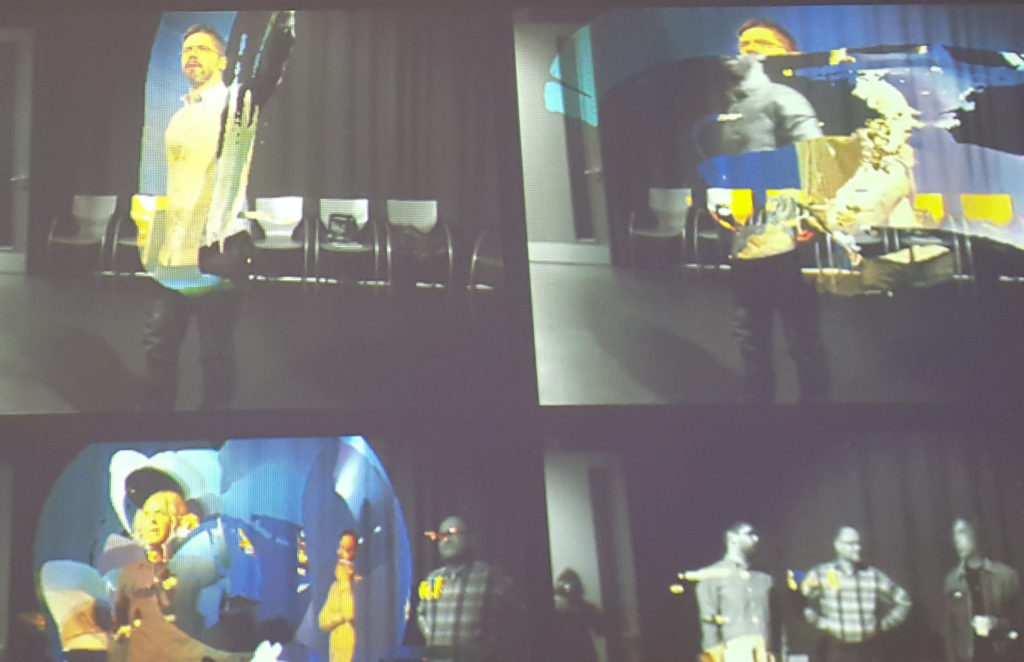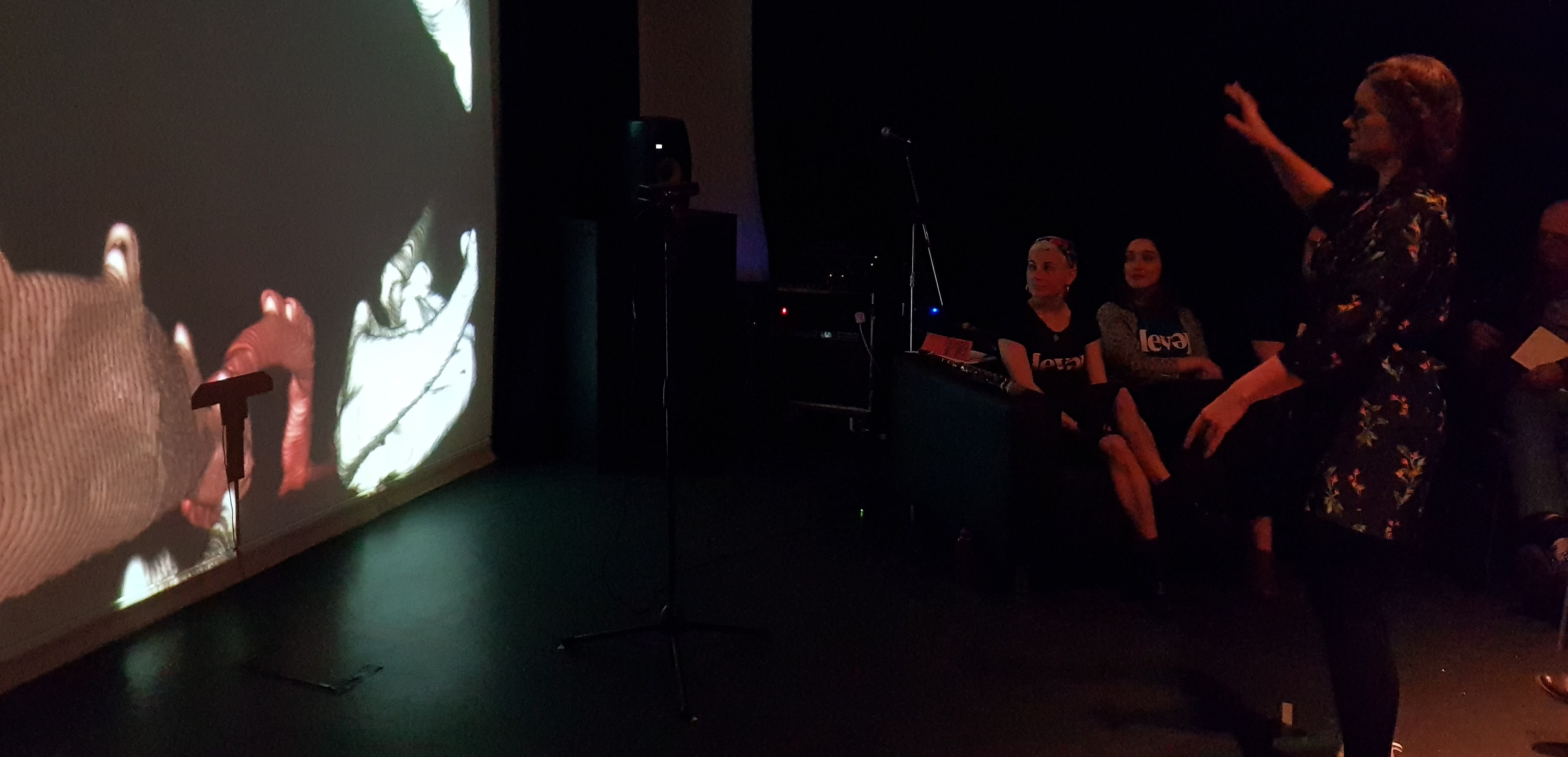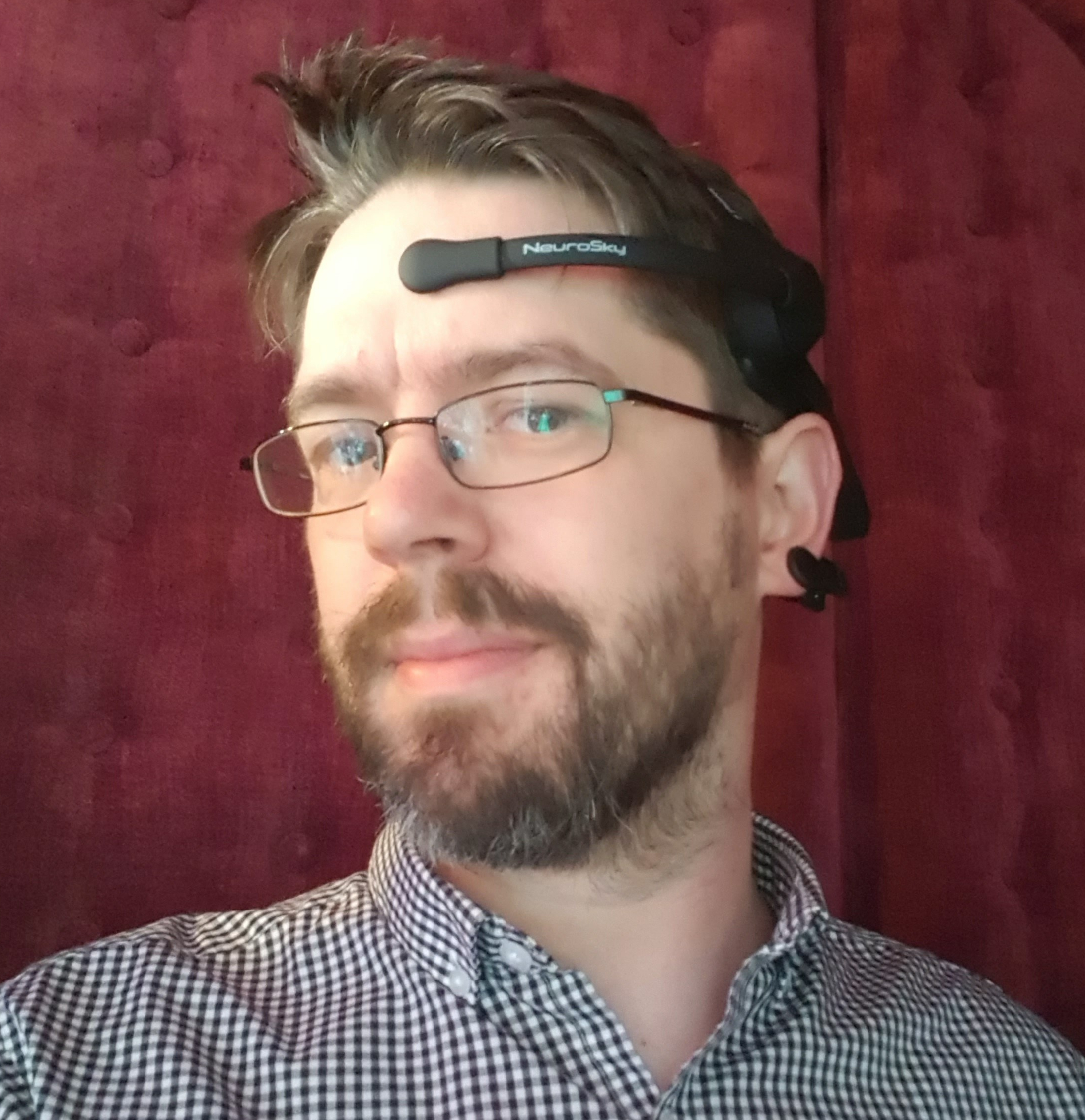
Digital Participation: Attention Vs Co-creation
Digital Participation Expedition
The second event in the Digital Participation Expedition with EMPAF focused on the levels and types of inputs participants have in digital engagement, while also opening discussion around the dangers of digital in our lives. The event looked at how these engagements present participants with real or presented power when it comes to creating and interacting with digital art work.
Hosted by Level Centre, who’s rural setting is home to some ground breaking arts projects with learning disabled people, providing fully accessible creative spaces. Projects also including the development and display of new and exciting digital art works. Works including Grzegorz Rogala & Joanna Krzyszton’s ‘Instrument’ and Will Hurt’s ‘Abstract Playground’.

At the event, as well as ‘Instrument’, delegates were able to participate in an audience performance piece called ‘Breath’, a participant led and created work where a performer invited the audience to contribute to a surrounding soundscape through the act of breathing into a microphone, with the sound being manipulated through a sound desk controller. While the act of breathing is universal and accessible for anyone to take part, the controller, with the participant performer, at first did seem to be the conductor of the of the experience. That was until an audience member, who at first just appeared to be a member of Level’s staff, joined the controller at the sound desk and took part in manipulating the sound. This highlighted early in the day that digital can be accessible to all, but skilled interaction takes some knowledge and experience.
A key experience for those attending the event was participating in Richard Ramchurn’s ‘The Moment’, a brain controlled movie. Audience groups were able to witness the movie, while a single participant wore equipment measuring their brain activity and manipulating the film accordingly. As the controller for my group, there were certainly aspects of this I felt in control of and some I am still wondering where the connection between conscious thought and outcome are connected.

Attention and Co-creation
What I found most interesting about the day was the discussions around participant needs and input with the works and the arguments that justified them. These conversations mostly centred around when in the creation of work are participants most valued in relation to contribution? Two levels presented themselves, the audience level and the co-creation level.
Attention Level
At this level, participants may want more choice or input, where there emphasis is on the artist’s work. Audiences are interacting with a work created by the artists, with the artists desired inputs and aesthetic outcomes. These are also supported with how the artist wants the participants to respond to their work. ‘Instrument’ was a good example of this. The participant is invited to be the conductor of their own instrumental orchestra, providing gestural instructions, like a conductor, to the work through a Kinect camera tracking their movements. The outputs of this interaction were beautifully constructed musical scores and visual sculptures, that were unique to the participant and giving the illusion that the participant has a high level of competence in orchestral composition. At this level, the audience can take part in the work created, but isn’t invited to change it or take it in another direction. For example, there is only the choice of two instruments to “play”, where if a participant wanted something else, they would have to have the intricate knowledge and coding skill to re-create the work, and that would only be if the artists let them.
Co-creation Level
At this level, the participants are invited to contribute the development of the work. They are part of the process of creation and the outcome has a stronger emphasis on participant input. Will Hurt’s ‘Abstract Playground’ presents a good example to this. Although, a lot the work is devised around the artists overall skill, vision and aesthetic, participants were part of the process creating the interactive soundscape of the work, as well as being a major consideration in the design of the input’s for audiences to interact with the work. This was a skills led participant interaction, where ‘Breath’ was again more universally accessible. ‘Breath’ also presented instant participation, where Hurt’s work would involves the construction of the participants contribution to create the final outcome.
At both these levels, there is a power dynamic at play. At the audience level the artist has the most power, giving participants illusions of control that are already predetermined and only manipulatable at an individual level. At the co-creation level, participants have more power. Either through influencing the outcome of the work, or giving direction to how the work is interacted with. Where participants have the most power the results appear to be instant (although not always the case), and where the artists has power they become a participant in the process, all be it as a participant with the most digital skill.
There is another aspect to consider around choice in these interactions. That is the role of participant as performer. At audience level, the participant is asked to interact with the work through a degree of performance. Some participants are more comfortable with this than others and a lot depends of the setting and the volume of audience attending. We find this a lot with VR works, for example, where by the act of interacting with the work, the participant becomes put on display for those around them to watch. In some cases, where the only way to view the work is through the VR headset, the participation becomes the performer of their own experience, which can reveal more of ourselves then we may be comfortable with. At co-creation level, the participant has been invited to be a performer, giving them the choice to be centre stage or take a supporting role. This may even change depending on how their confidence changes throughout the process. We find this when participant created work is put on display. Participants who may have felt insecure during the creation of the work, start to feel a sense of pride in seeing their work displayed, especially in a gallery or museum setting.
Adapted from a blog post for ArtWorks Alliance Digital Participation Action Group Update at https://www.artworksalliance.org.uk/our-work/digital-participation/